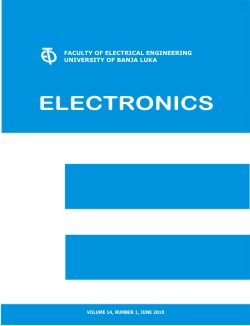Impact of Sectorization/Vehicular Traffic on Minimum Cell Size for Information Capacity Increase in Cellular Systems
DOI:
https://doi.org/10.7251/ELS1317021AAbstract
In this paper results of mathematical analysis sup-ported by simulation are used to study the impact of sectorization/vehicular traffic on the theoretical limit for cell size radius reduction in cellular wireless communication systems. Information capacity approach is used for the analysis. Attention is given to the active co-channel interfering cells. Because at carrier frequencies greater than 2 GHz, co-channel interfering cells beyond the first tier becomes dominant as the cell size radius reduces. Results show that for sectorized cellular wireless communication system operating at carrier frequency greater than 2 GHz and having smaller cell size radius in a traffic environment the second tier co-channel interference still becomes active. This causes a decrease in the information capacity of the cellular wireless system. For example for a heavy vehicular traffic environment, at a carrier frequency fC = 15.75 GHz, basic path loss exponent α = 2 and cell radius R = 100, 300 and 500 m for a six sector cellular the decrease in information capacity, because of interference from the second tier was 5.47, 3.36 and 2.78%.Downloads
Published
2013-06-15
Issue
Section
Чланци

